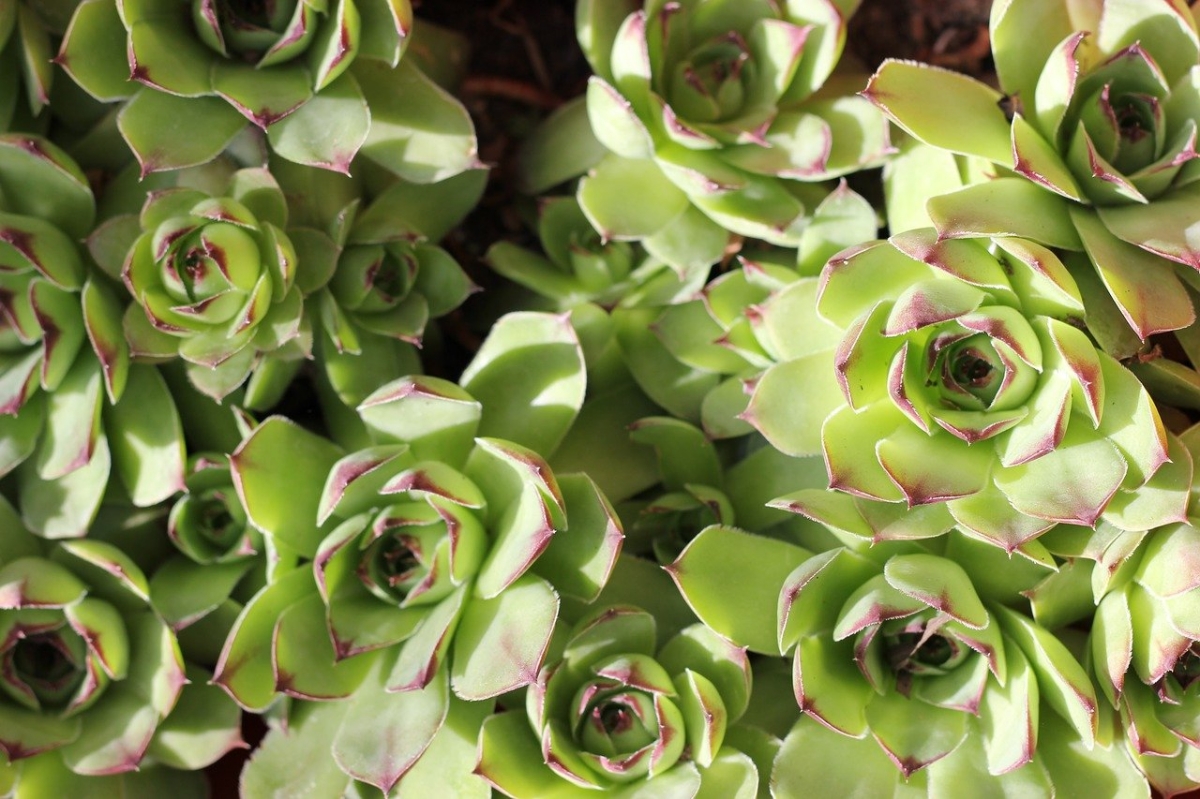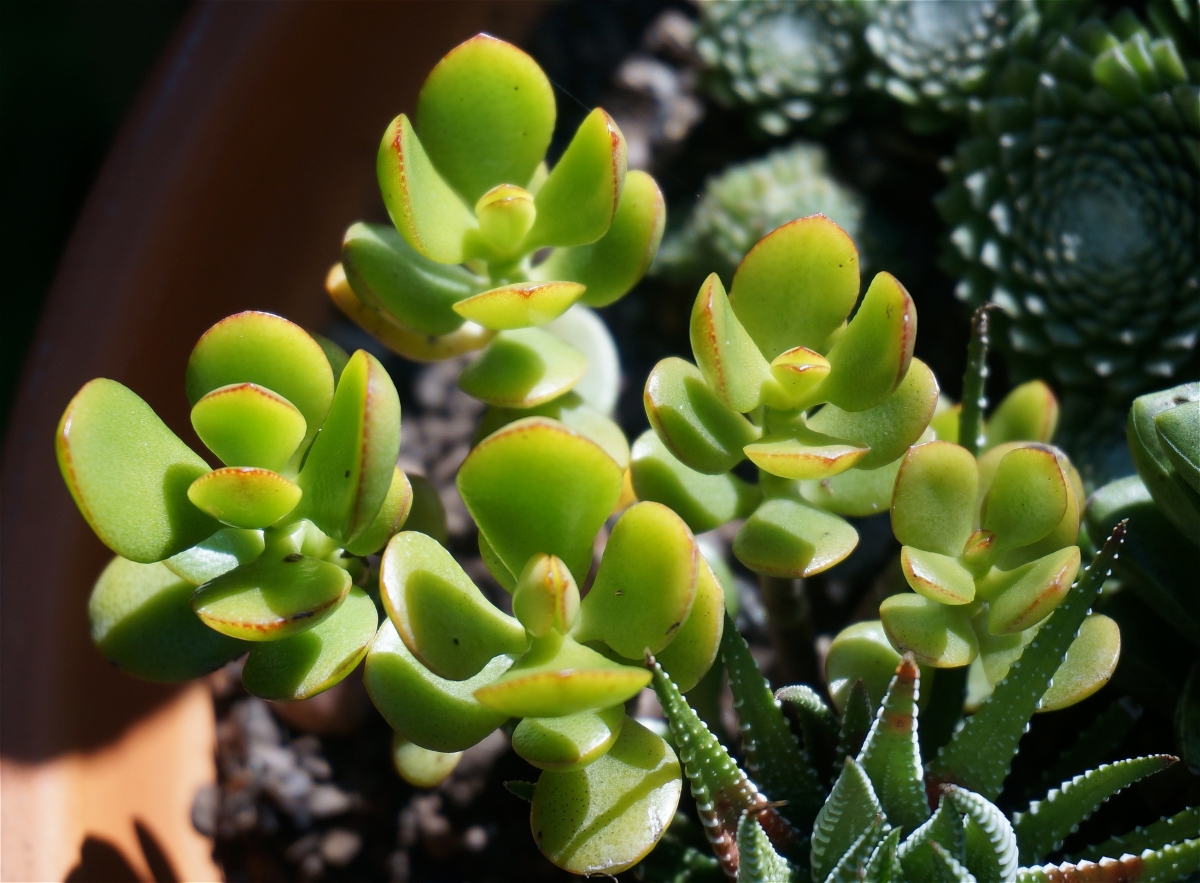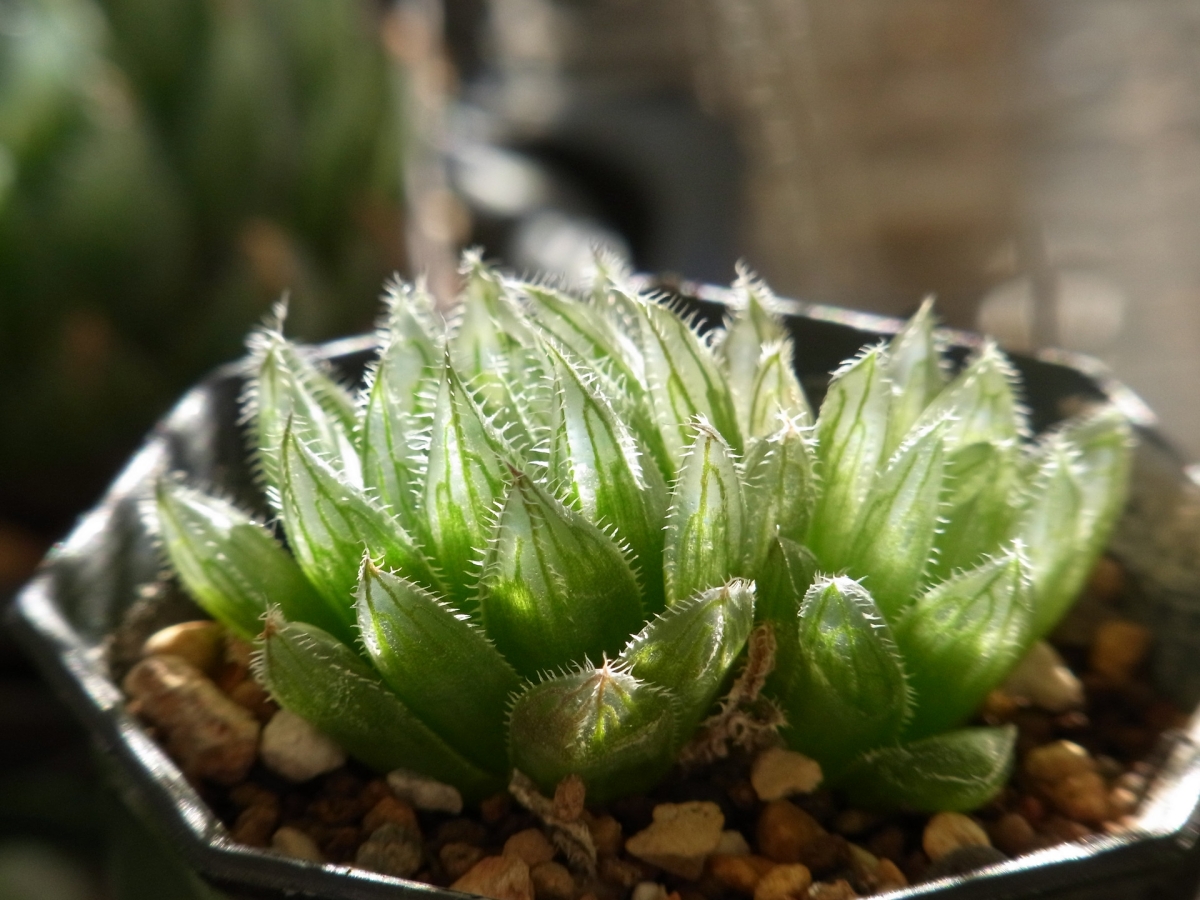
Image - Flickr / salchuiwt // Haworthia cooperi var. Gordonian
Surely you have ever read or heard that succulents need direct sun. This is often true, but there are a few varieties that prefer to be in protected areas, where the sun's rays do not hit them directly. These are the ones that, in addition, can be grown indoorsSince they are not so demanding of light, they grow very well indoors.
So if you want to create a composition or just enjoy having a few shade succulents, discover their names below.
Selection of shade or indoor succulents
Take a look at the species that we recommend, both cactus and succulent plants. In this way, you can have a garden, or if you prefer the interior of your home, with succulents that are not only beautiful, but also easy to maintain:
Aeonium tabulaeforme
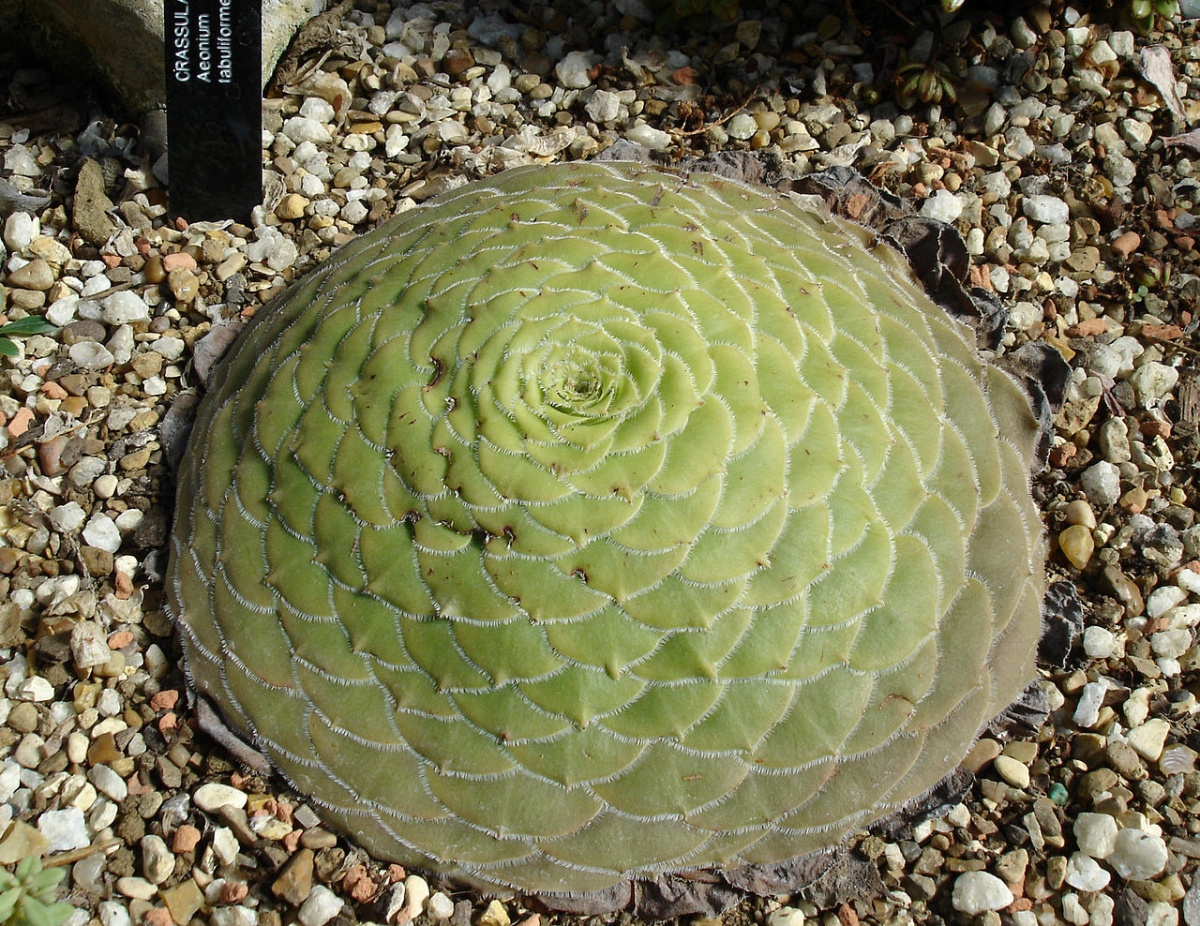
Image - Wikimedia / Bluemoose
El Aeonium tabulaeforme it is a very curious succulent, since forms a flattened rosette composed of about 200 green leaves, with a diameter of between 15 and 30 centimeters. It blooms producing an unbranched stem 30 to 60 centimeters tall, from which numerous yellow flowers sprout. It does not stand frost.
Aristaloe aristata (before it was Aloe aristata)
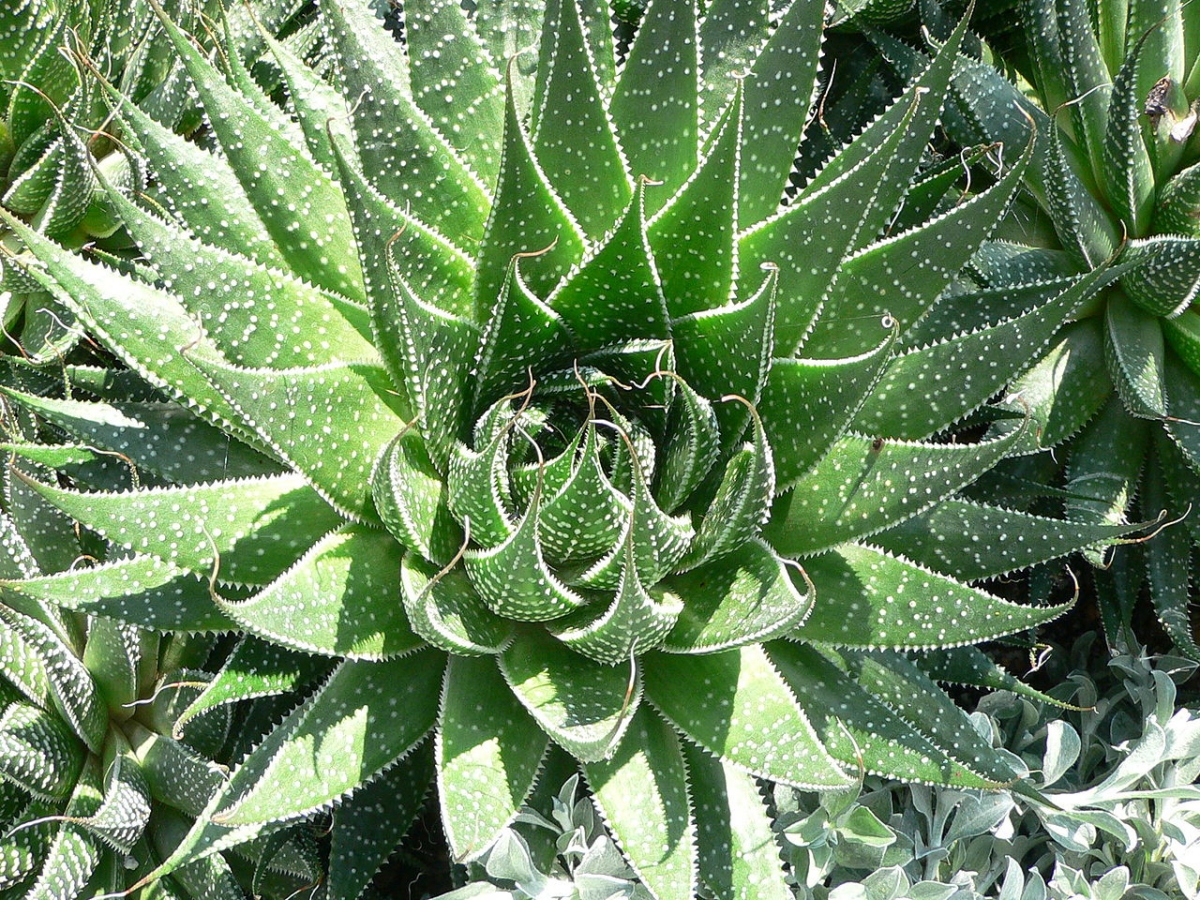
Image - Wikimedia / Raulbot
El Aristaloe aristata is a species that grows to 5-7 centimeters tall at most, but has a diameter of up to 30 centimeters. Its leaves are almost triangular in shape, dark green, and have white dots on both sides. Its flowers are red, tubular, and sprout in spring. It can be outside as long as the temperatures do not drop below -2ºC.
Crassula ovata
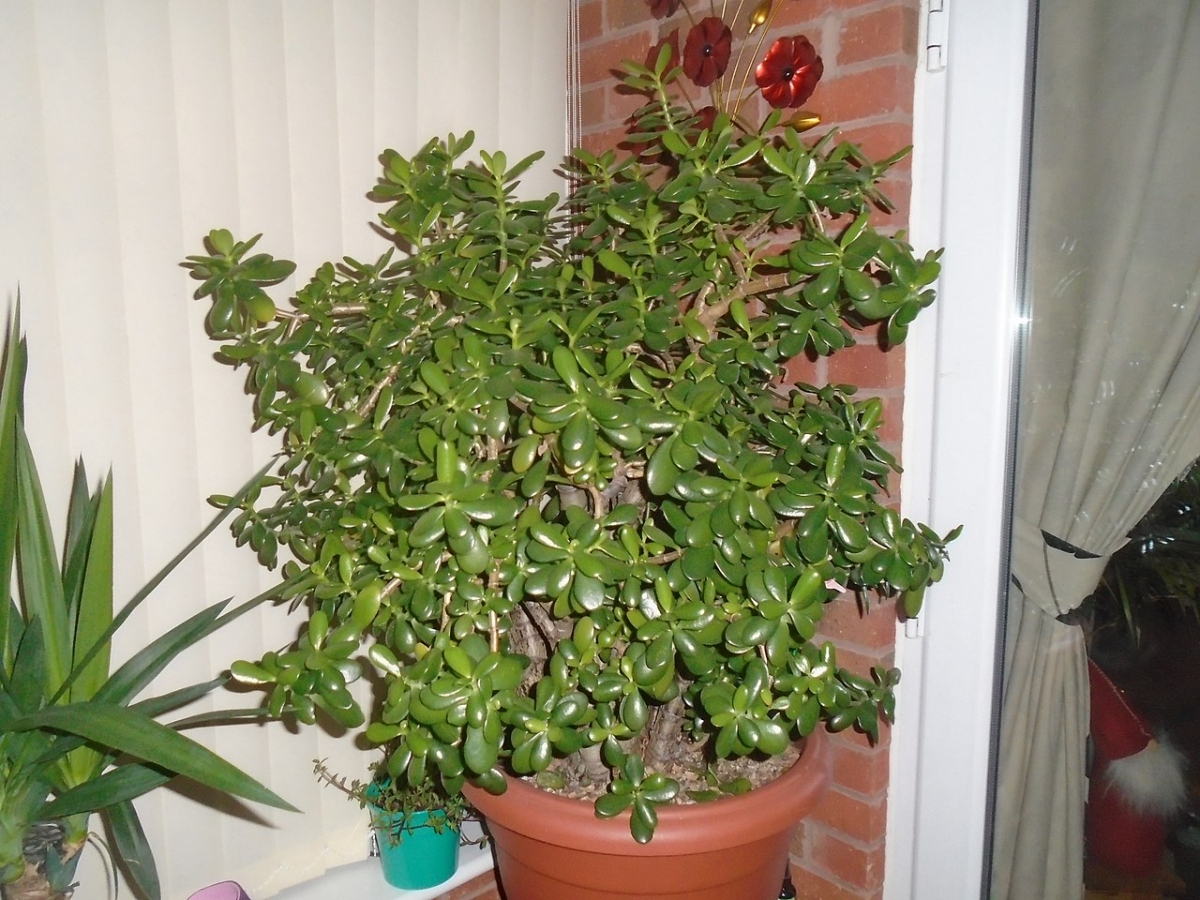
Image - Wikimedia / Orengi Harvey
La Crassula ovata It is a succulent shrub known by the name Jade tree. It reaches 2 meters in height, but you can have it lower if you wantas it tolerates pruning. Its trunk is thick, about 5-6 centimeters, with light brown bark. The leaves are green and rounded, and sometimes it produces white flowers. It resists mild frosts well, down to -2ºC.
Epiphyllum oxypetalum
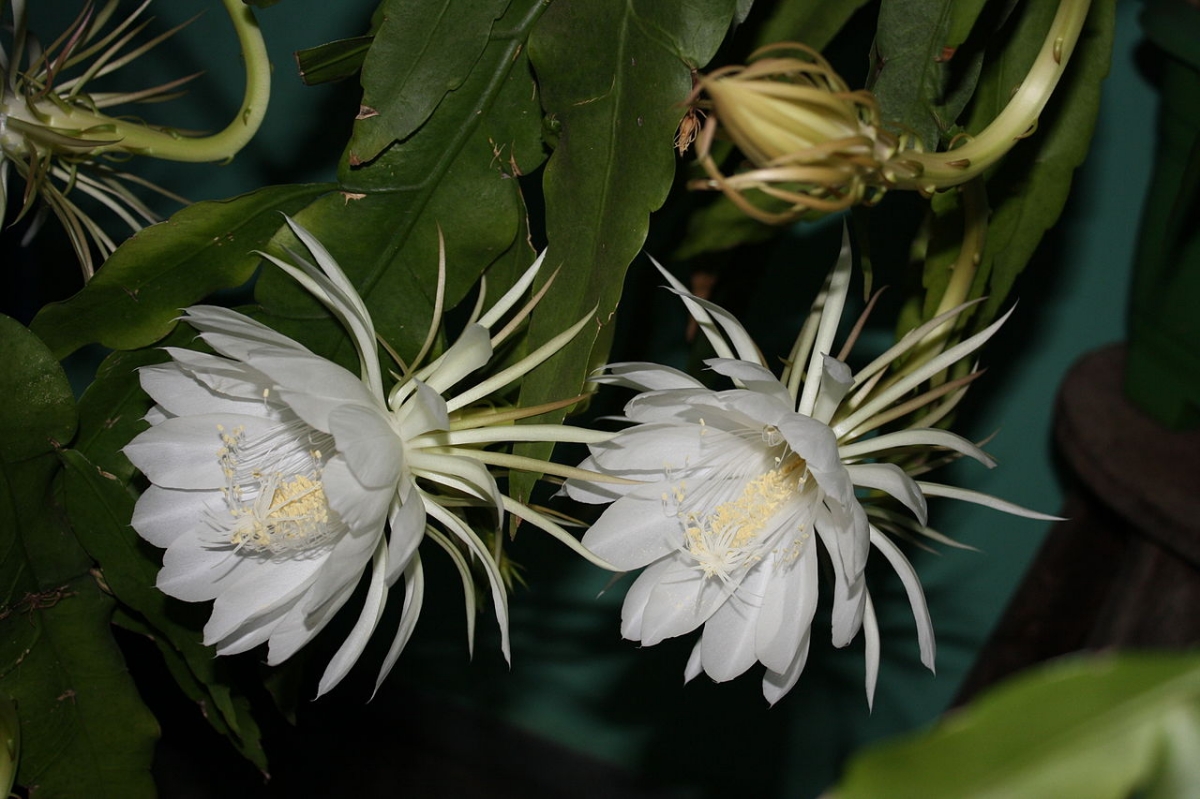
Image - Wikimedia / LEONARDO DASILVA
El Epiphyllum oxypetalum It is an epiphytic cactus known as the lady of the night, which lacks thorns. It has green stems, and can be 2-3 meters tall. It is one of the succulents that produces the largest flowers: up to 25 centimeters in diameter. They are white and aromatic, but they only last one night, so you have to be vigilant. Can't stand the cold.
gasteria carinata
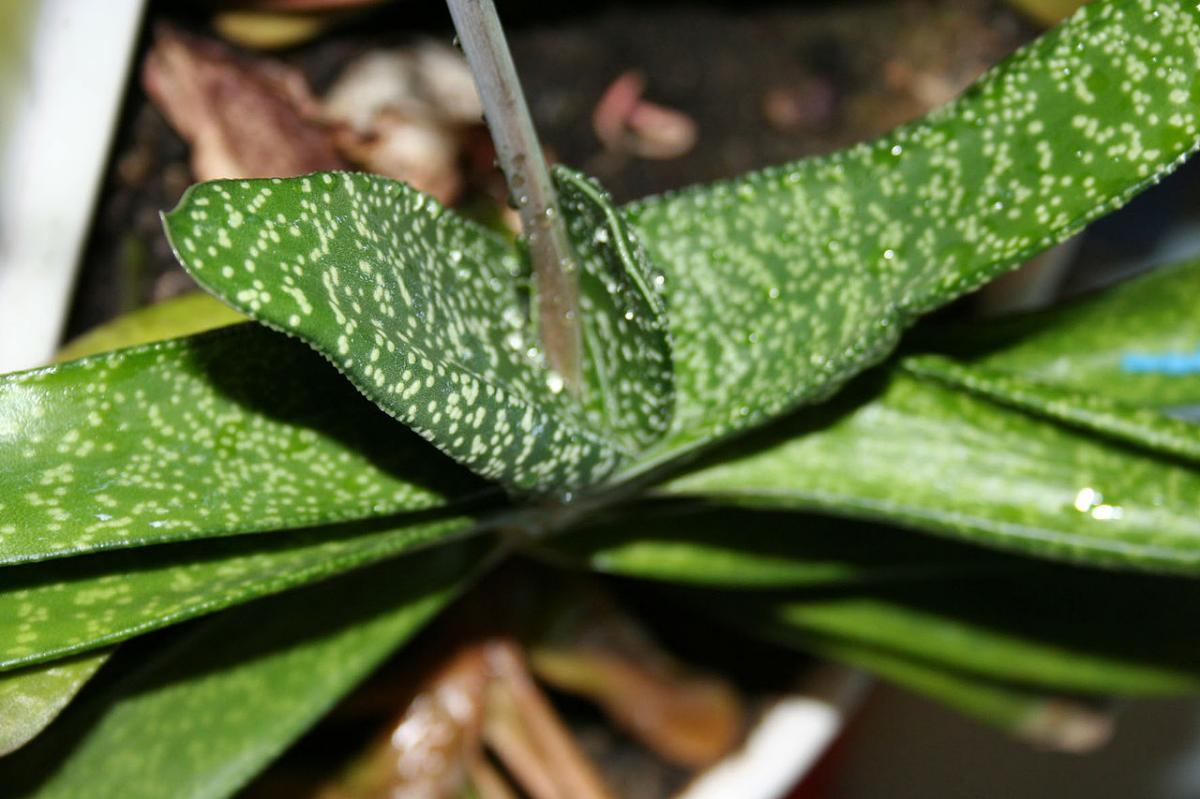
Image - Wikimedia / Hippocampus
La gasteria carinata is a plant that reaches a height of 20 to 40 centimeters tall, with fleshy, lanceolate, dark green leaves with white dots on both sides. It may be somewhat reminiscent of aloes, but it has a more compact demeanor and stiffer, shorter leaves. Its flowers sprout from a stem about 30 centimeters long, and it is tubular in shape. It supports up to -2ºC, but it must be protected from wind and hail.
haworthia fasciata
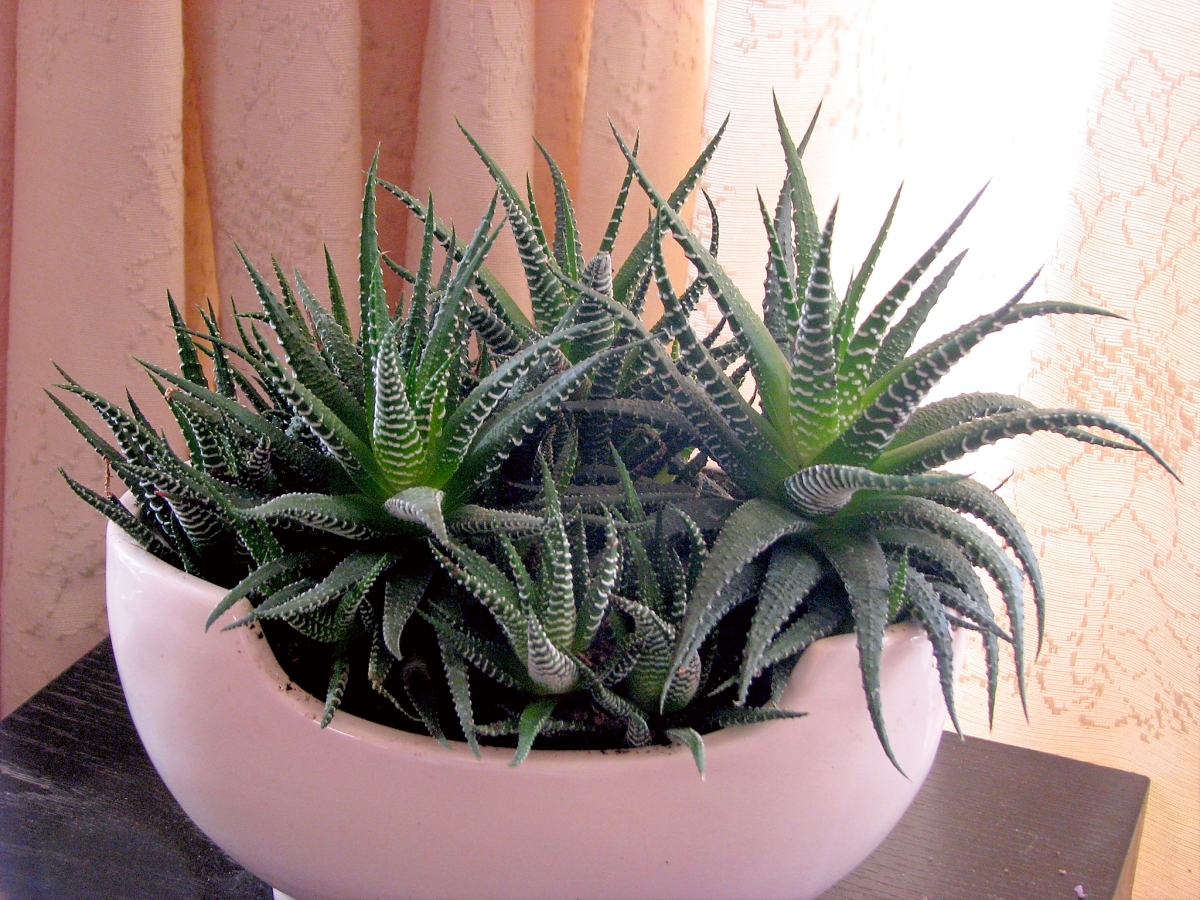
Image - Flickr / ekenitr
La haworthia fasciata it is a succulent of shade, small, that reaches a height of 15-20 centimeters and that brings out many suckers. In addition, it also blooms, and it does so by taking out an inflorescence composed of red tube-shaped flowers. Its leaves are dark green, and have white spots on the underside. It resists frosts of up to -1ºC if they are punctual and of short duration.
Sansevieria trifasciata
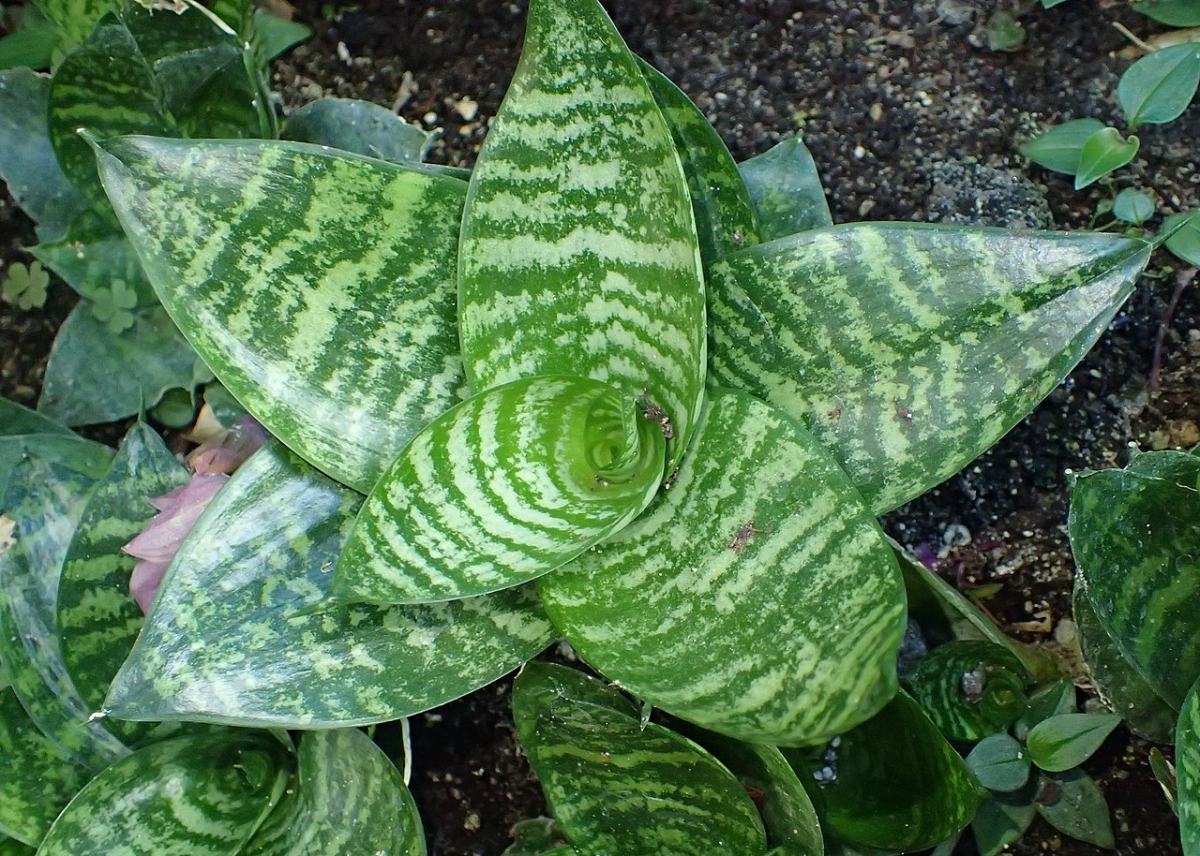
Image - Wikimedia / Krzysztof Ziarnek, Kenraiz
La Sansevieria trifasciata or sword of St. George is a plant that can be grown indoors with lots of light. It has succulent, broad and long leaves of 40-50 centimeters. Its most common color is dark green, but it will depend on the cultivar, and there are some that are more yellow than green like the »Golden Hahnii», others are blue-green instead. There are even some that are very light green with dark green lines, like the »Zeylanica Fan». It supports the cold, but if there is frost it will need protection.
sedum morganianum

Image - Wikimedia / Salicyna
El sedum morganianum, or sedum burrito, is a succulent plant that is widely used as a pendant. Have 30 centimeter long stems, and fleshy green leaves. Very small, pink flowers sprout from the end of some stems. It is common to plant it in baskets or pots hanging from the ceiling. It does not support cold or frost.
Schlumbergera truncata
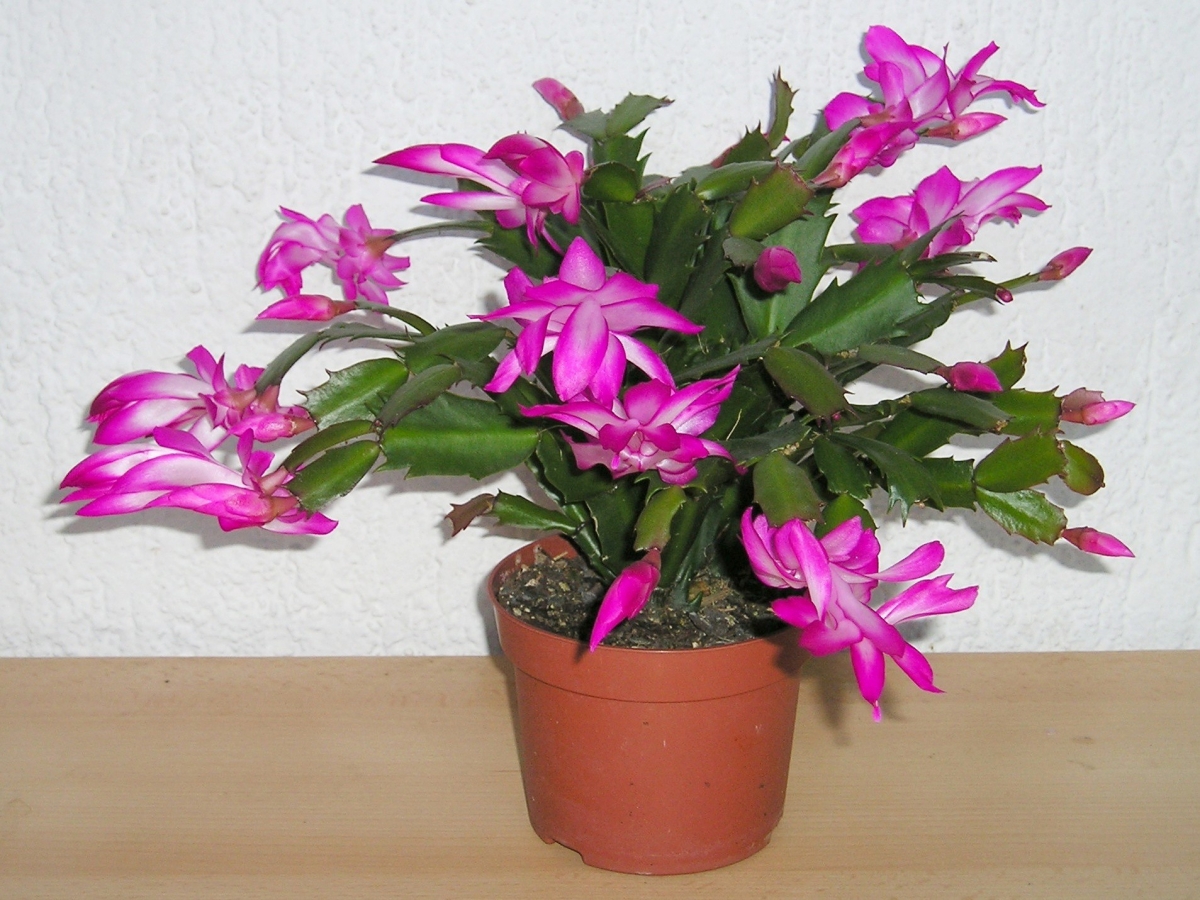
Image - Flickr / Maja Dumat
Known as christmas cactus, this succulent is an epiphytic or hanging cactus with flattened, green stems up to 40 centimeters long which blooms in winter / spring. Its flowers are very pretty, yellow, pink or red, sprouting from the end of the upper stems. It is one of the few species of cacti that wants shade. It resists up to -1ºC, or -2ºC if it is well protected from the wind.
Sempervivum tectorum
El Sempervivum tectorum It is a kind of fleshy plant that grows in groups of several specimens. Reaches an approximate height of 10 centimeters, and its leaves are bluish-green with a reddish tip. It produces flowers in summer which sprout from a stem about 30 centimeters high, and are pink or reddish in color. Resists up to -18ºC.
How are they cared for?
Succulents, that is, cacti and succulents, are plants that, in general, resist drought. In addition, they need a lot of light (not necessarily direct sun, as we have just seen), so if they are kept at home it is important that we provide them with the care that we advise now:
Location
- Body exterior:: of course, in shade, for example under a shade net or the branches of trees.
- Interior: they must be placed in a room with a lot of natural light. In addition, there must be no drafts, which is why they must be kept as far as possible from fans, air conditioning, etc.
Pot and substrate
Succulents they have to be planted in those pots that have holes in their base. It is recommended that they be made of clay since this is a material in which the roots can "cling", and therefore have a better development; but they can be plastic without problem.
Regarding the substrate, it must be a specific one for these plants, such as this. You can also use the standard mix, which is 50% peat + 50% perlite (for sale here).
Irrigation and fertilizer
Irrigation has to be low, whether they are outside or inside the house. Basically you have to water when the substrate is dry. That is to say, it will be watered more or less once or twice a week during the summer, and less the rest of the year since the earth remains humid for longer.
During the warm months it will also be advisable to fertilize the shade succulents with fertilizers for cacti and succulents (for sale here). It is a way to keep them healthy and well nourished.
Transplant
They have to change pot every three years approximately, except those that take many suckers or grow fast, such as Smpervivum or Haworthia, which have to be changed more frequently unless these suckers are removed and planted in other pots, something that can be done in spring.
Rusticity
It will depend on the species. Sempervivum withstand moderate frosts very well (down to -18ºC), but extreme heat (30ºC or more) can harm them; the Schlumbergera truncata It has a tropical climate, with mild and warm temperatures all year round, as well as gasterias and haworthias. You have more information above, in the section on Selection of shade succulents.
What do you think of these plants?
